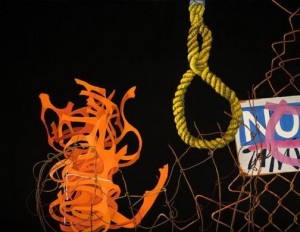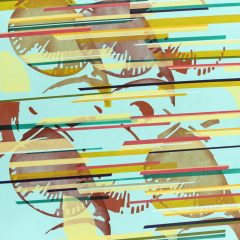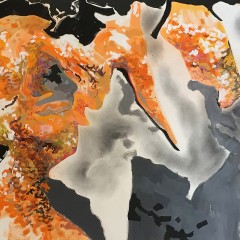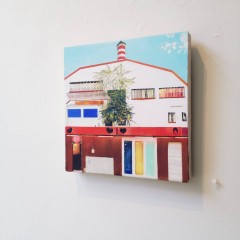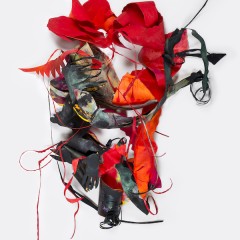Joan Waldeigh Curran’s exhibition Accumulation, at Seraphin Gallery until Feb. 3, 2013, showcases her unique still life compositions consisting of plant life and the discarded and overlooked object: trash.
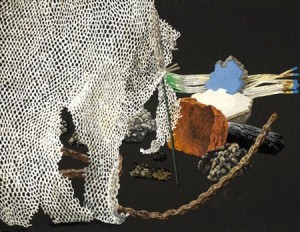
Curran’s colorful gouache paintings on black paper are composed of discarded items from three different locales: A Wyoming quarry, the coasts of Ballycastle, Ireland and the streets of Philadelphia. Curran’s paintings elevate everyday junk removed from its exterior context and arranged by the artist to create striking compositions. The work discusses the value system humans use to deem things unworthy of possession but does so without being an environmental critique. Instead, her work serves as a larger statement about humanity and challenges our notions of beauty and merit.
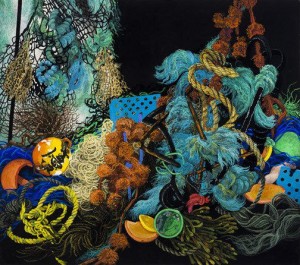
The works from each series are integrated and spread throughout the gallery. While walking through the exhibition, I found myself most drawn to the pieces that are fuller in composition, which read less as simple object studies and more as fully realized paintings. Recognizable by the presence of brightly colored turquoise rope, most of these works belong to the series from Ballycastle in which Curran collected objects that had washed up on the shores of Ireland and compiled these various bits of debris into still lifes.
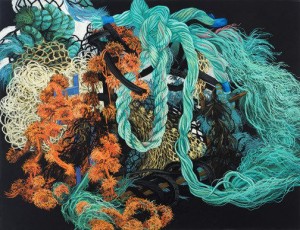
There are multiple visual and conceptual parallels present in all of Curran’s work in Accumulation, especially present are the binaries found in the Ballycastle series. These discarded objects often consist of fibrous shapes painted in grippingly saturated color and rendered with a fluidity that mimics the environment from which they were plucked. The debris which makes up “Unraveled, Ballinglen,” a landscape-like composition, is riddled with flowing forms and it is unclear at first glance which elements are natural sea life and which are manmade garbage. These forms intertwine as if they belonged together. They have been removed from their watery world and thrown into the unexpected context of still life, transitioned from ocean to land. The orange of the plant life and the teal of the synthetic rope complement each other in form and color. These Ballycastle works memorialize both the synthetic and natural elements from the coast, treating them not as dead forms but rather as neglected objects given new purpose.
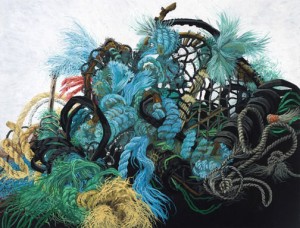
In all of the works present in Accumulation, Curran gives new life to forgotten form. The orange plastic left from a construction site is given new use in “Notice,” part of the Philadelphia Urban Trash series. The wire fence is unraveled and intertwined with twigs, displaying a congruency of the manmade object and nature. “Orange Fence and Rope” is likewise a portrait of Philadelphia trash that offers a new existence to derelict objects.
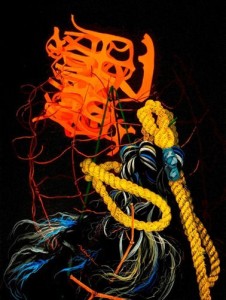
Currans exhibition asks complex questions through simple still life. She asks us to examine our value system and our preconceived views of merit and she shows us the “worthless” in a new light. Curran’s work anthropomorphizes what we call garbage in a manner that spurs a deeper investigation into the cycle of life of an object.
